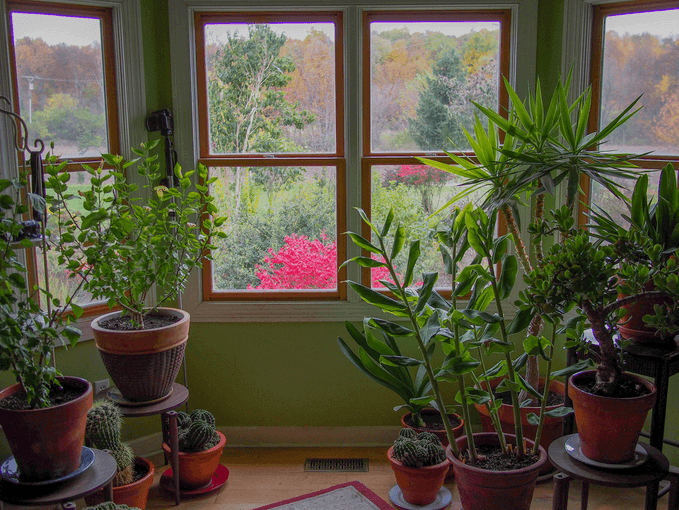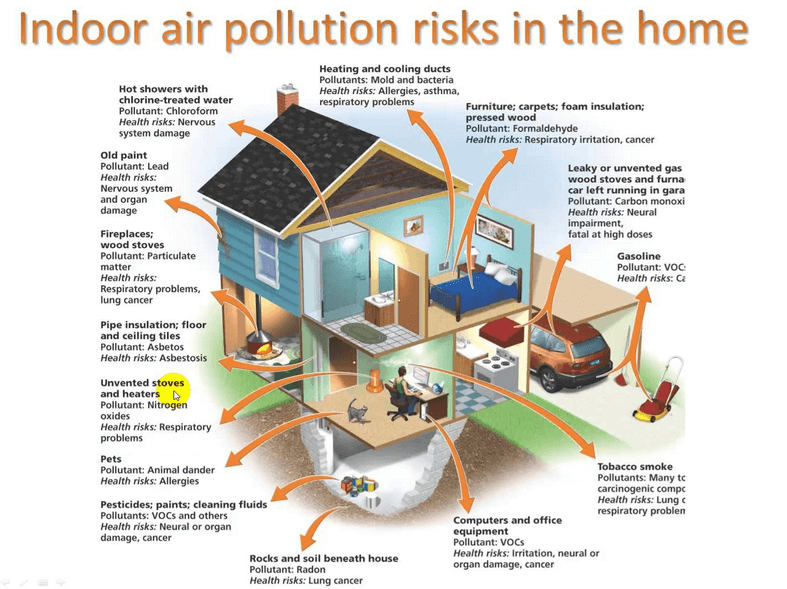
Photo via http://ow.ly/4XdS300hXbY
May is Clean Air Month. When most people think of air pollution, they immediately picture a factory blowing smoke miles into the sky above it. But did you know that indoor air pollution can be worse than outdoor air pollution? EPA research on this subject shows that the levels of pollutants indoors can be two to five or even up to 100 times higher than the pollutant levels found outdoors. Can you imagine the increased amount of airborne pollutants in a home after a long winter with the windows closed? This statistic led me to wonder what we can do to clean up the air in our homes. The answer is to get some plants that specialize in improving indoor air quality. Consider this list of plants that vary in how much light they need to flourish.
Plants That Need Bright, Direct Light
- Aloe Vera: Aloe Vera is a beautiful, inexpensive plant that helps to clean benzene out of the air. Benzene is used to make chemical cleaners as well as paint. This plant releases oxygen at night while absorbing carbon dioxide. Aloe plants are succulents, so they require well-draining soil and an adequate amount of water.
- Barberton Daisy: These daisies can remove benzene along with other pollutants from the air. They are inexpensive and flourish in bright sunlight and moist soil.
- Rubber Plant: The toxins removed by this plant include formaldehyde, trichloroethylene, and carbon monoxide. It needs fertilizer containing a large amount of nitrogen and should receive a moderate amount of water. This is one of the more expensive houseplants.
- Wax Begonia: This succulent features brightly colored flowers in the summertime and absorbs benzene from the air. Water this inexpensive plant so the soil stays moist all of the time.
Plants That Need a Moderate Amount of Light
- Peace Lily: Peace lilies have been known to improve the air quality in a home by 60 percent. The leaves of this plant absorb mold spores and use them as food. Many people put this inexpensive plant in their bathroom to prevent the growth of mildew. What a great idea! A peace lily only needs water when its soil is dry.
- Spider Plant: Spider plants are inexpensive and are able to remove 90 percent of toxins found in the air in the span of about two days! Among other toxins, they absorb mold, formaldehyde, and carbon monoxide. These plants need an adequate amount of water without making the soil soggy. I have a spider plant on my desk; I love to admire the ribbon design on each of its leaves.
- Moth Orchid: Xylene and toluene are two toxins that moth orchids remove from the air. This orchid should be kept in moist soil that never completely dries out. Moth orchids are one of the more expensive indoor plants.
- Dracaena: Dracaena plants remove benzene, formaldehyde, trichloroethylene, and xylene from the air. This inexpensive plant needs to grow in moist soil. If yellow leaves appear on the plant, that means that it has inadequate drainage.
Plants That Need Indirect Light
- Boston Fern: This traditional favorite adds moisture to indoor air and can remove formaldehyde. It’s a moderately priced plant that grows best when its soil is kept damp. Find a cool place in your home for your fern.
- English Ivy: English ivy can clean formaldehyde and benzene from the air as well as remove airborne fecal matter. This inexpensive plant needs to be kept in moist soil and requires space for its vines to grow. Many people keep them in hanging baskets.
- Bamboo Palm: Bamboo palms are large plants that can be expensive. However, they remove trichloroethylene and benzene from the air. These plants are easy to care for and should be given filtered water only if the soil is dry.
- Snake Plant: This is a moderately priced plant that efficiently cleans a wide variety of toxins out of the air, including benzene and formaldehyde. Water this plant only when the soil is dry, and plant it in average-quality soil.
Do your part for Clean Air Month and add a lovely, useful plant to your home!

Photo via http://ow.ly/Qq9C300hXKy
![[Avas Flowers] Avas Flowers](https://www.avasflowers.net/newimg/avas-logo-new.png)
